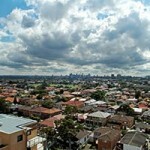 Each property cycle has certain typical characteristics. While there are a few aspects which do not change, there is bound to be a factor Y that is unique to each property cycle. Each cycle goes through a peak and a trough phase, a downturn and a recovery phase but where one cycle may be marked by excess liquidity (its unique factor), another may be peppered with lack of consumer confidence.
Each property cycle has certain typical characteristics. While there are a few aspects which do not change, there is bound to be a factor Y that is unique to each property cycle. Each cycle goes through a peak and a trough phase, a downturn and a recovery phase but where one cycle may be marked by excess liquidity (its unique factor), another may be peppered with lack of consumer confidence.
Without delving deeply into what separates one property cycle from another in general, let us focus on the major differences between the present and the last property cycle. I am sure some of them will surprise you and one such difference in particular may change the way you look at the coming property cycles.
The last property cycle in Australia- Jan 2001 to Oct 2004
Between 2001 and the early months of 2004, Australia witnessed a housing boom. One major difference between the current and the previous property cycle is that the last one came on the back of consecutive years of growth (albeit moderate growth) while the present one found itself succeeding at least two years of dropping prices. In fact, it is not incorrect to suppose that because the current cycle took off from a near-trough position, what seemed like phenomenal growth in the cycle’s early days was just a consolidation for tough years gone by.
Sydney property market (and Melbourne’s)
While Sydney and Melbourne have been the star performers this time around, their performance was nothing to write home about during the last boom cycle. In fact, barring Darwin, all the other capital cities had outshone Sydney and Melbourne.
Property market cycle: length/duration
 The last growth cycle began to fizzle in the early part of 2004 but came to a halt only in the month of October. Starting in January 2001, it ran for 46 months. Over this tenure, house prices shot by 68.1%. On average, this implies a growth of 1.47% growth per month. Compare this to the growth pattern of the present property cycle.
The last growth cycle began to fizzle in the early part of 2004 but came to a halt only in the month of October. Starting in January 2001, it ran for 46 months. Over this tenure, house prices shot by 68.1%. On average, this implies a growth of 1.47% growth per month. Compare this to the growth pattern of the present property cycle.
Commencing in June 2012, it has seen consistent growth at least till the period of March 2015 (beyond which pundits harbour different opinions). Over the period of 33 months, combined capital city values have shot up by 20.4%. This is close to a 0.7% growth per month. Is there actually such a drastic difference between the growth averages? If so, why?
What contributes to this difference is the rather poor performance of a host of capital cities during the current cycle of growth. Hobart, Darwin and Canberra have lost their bearings. Brisbane is not performing to its potential and Adelaide has been lying low for long.
While Sydney has seen a meteoric rise (and the growth is confirmed by its new-found fame as a global hotspot) and Melbourne has done quite decently, they together have not been able to undo the damage done by the other capital cities. During the last cycle, each such city consolidated well. And so, if a study is conducted into the monthly growth average, the last cycle, as expected, beats the present one by quite a margin.
Dwindling length of Australian property cycles
There is something to say about the dwindling timeframe of property cycles. While the past cycles ran for a minimum of 7 years and a maximum of 9, the last cycle only ran two months shy of 4 years. The present one may not go that distance, and if it actually does, it may only be by a whisker. For starters, we will have to continue till May 2016 to beat the length of the last cycle.
Already, certain pockets of Australia’s real estate are feeling the pinch and soon, questions of affordability, tiring rental yield, sloppy capital growth, rising cash rate and a sudden burst of inflationary pressure may put paid to our best hopes of a longer property cycle.
Property boom: A trivia worth noting
Before I continue with citing further differences between the last and the current cycle of Australian real estate, here is a bit of trivia for you, and it is a point worth mulling over: For the first time, the home values corresponding to the trough of a cycle have fallen below the trough of a previous cycle.
Australian property cycle: Why are troughs falling below previous ones?
 This can be put down to shorter cycles, those which are highly volatile in nature and can exhibit real big ‘lumps’ and terrible troughs (unpredictable lows, beating anything in the past). Here we are talking about actual values dipping below previous troughs (and not the inflation-adjusted figure). This said, the nominal values can’t dip below a certain measure.
This can be put down to shorter cycles, those which are highly volatile in nature and can exhibit real big ‘lumps’ and terrible troughs (unpredictable lows, beating anything in the past). Here we are talking about actual values dipping below previous troughs (and not the inflation-adjusted figure). This said, the nominal values can’t dip below a certain measure.
For example, even at the worst of trough situations, houses cannot sell now for $500 the way it may have sold in a cycle from 200 years ago. Adjusting for inflation, $500 then corresponds to $150,000 now and if it sells any lower than $150,000, we can always infer that we are trading lower than troughs of the past cycles.
Sales transaction for the last property cycle in Australia
Going back to the comparison, both the property growth phases have seen an increase in the number of sales of detached houses and dwellings (that is why it is called growth, right?) but the volume of sales indicate a distinct pattern. Over the last cycle, 1,402,217 homes (houses and units combined) were sold. This time around, there has been 8,32,906 sales till Feb 2015. Clearly, there is a difference of 5,000 in the monthly averages, the average being higher during the last growth cycle that lasted from Jan 2001 to October 2004.
Sydney price growth: Understanding data through trend
This particular data is hard to comprehend, especially for Sydney. We have had a definite population growth here. In addition, there has been more ‘inventory’ in terms of development-ready stock this time around and yet the transaction activity was faster during the last growth cycle. Strange!
They say that sometimes, you cannot put a finger on a logical reason behind a happening. This is one such case. There is an absence of a substantial phenomenon to which this trend can be tied but here are two reasons that come to mind: 1) the presence of first home buyers has diminished considerably this time and 2) there is a greater tendency towards saving presently.
Standard mortgage rates for the Sydney property market
For the present property cycle, we have also witnessed that the standard variable mortgage rates are substantially lower (more than 1%) than it was for a great part of the last cycle. Except when at its lowest, the rate stuck to 7.05% during the last cycle whereas it has been below 6% for much of the current cycle. It is not hard to figure out that the government’s continued insistence on dropping the cash rate caused the drop in mortgage rates this time around. Seen in this light, it is an interesting thing to imagine how the variable mortgage rate will scurry for cover now that the cash rate is likely to undergo rapid ‘correction’.
Key determining variable for average house price in Sydney: housing credit/investor credit
 Housing credit and investor credit is about three times lower than it was during the 2001-2004 boom, a fact that I think should not be hard to explain. We cannot expect a growth in property prices that would be anywhere near the last cycle because the volume of lending has become so high. It remains to be seen how this data may change now that the top lending institutions are deciding to put a break on the furious speed of lending.
Housing credit and investor credit is about three times lower than it was during the 2001-2004 boom, a fact that I think should not be hard to explain. We cannot expect a growth in property prices that would be anywhere near the last cycle because the volume of lending has become so high. It remains to be seen how this data may change now that the top lending institutions are deciding to put a break on the furious speed of lending.
What drives an Australian property cycle?
In general, a property cycle is driven by various factors which may include, but is certainly not restricted to, demand-supply, consumer index, economic growth, liquidity, infrastructure initiatives, overseas buying trend, and investment portfolio trend, among other things. Let us take up some of these points briefly.
Demand-supply
 To a certain degree, the higher the supply (and if there is consistent value growth), the higher the demand would be. The graph then softens after a certain point, and despite higher supply, a point of diminishing marginal utility arrives where growth in supply–even with value growth–becomes disproportionate to the growth in demand.
To a certain degree, the higher the supply (and if there is consistent value growth), the higher the demand would be. The graph then softens after a certain point, and despite higher supply, a point of diminishing marginal utility arrives where growth in supply–even with value growth–becomes disproportionate to the growth in demand.
Consumer confidence
Consumer confidence is among the top deciding factors when it comes to the shaping up of the growth cycle. It may reflect itself best in the continued good performance of certain capital cities and, in the same vein, the consistently poor performance of others. Using Sydney as an instance, we can easily infer that high consumer interest led to urbanisation trends and rapid gentrification of Sydney and it led to a more furious population migration to these parts, thus leading to even higher growth. This chain reaction, I am sure, should be easy enough to understand.
Liquidity
Liquidity can be directly linked to purchasing power. While the local Aussie shares are not doing too well, global equities are seeing their best days. This can help investors with diversified portfolios to leverage property investments with gains made in other ventures. To sum it up, the more the liquidity, the larger the bag pouring into real estate would be.
This is why the Capital Gains Tax has always been a matter of great debate. It brings down ROI and thus affects capital flowing into the market. Because CGT applies only at the time of realisation of profit, sometimes investors hold below-average properties and the lock-in effect ends up damaging their portfolio and consequently the liquidity, too. I must add that CGT is just one of the many things that can hurt liquidity.
Overseas buyers
Overseas buyers can make a big run for local properties. In the present property cycle, Australia has suffered from currency devaluation. This is always great news for overseas buyers because it means that they will require less of their local currency to buy properties within our shores. The larger their gathering, the higher they push the prices and you can well make out how it can affect the property market (pushing out first home buyers from the property race is one among the many reverses of intense overseas buyers’ activity).
Phases of a Australian/Sydney property cycle studied through the last and the current one
 Each property cycle is marked by a few dominant phases. The length and the surface nature of each phase determine the characteristic of a cycle. After a trough phase, a market usually recovers. This period is marked by an increase in the number of enquiries, transaction activity, rental yield, consolidation of capital growth and a uniform market growth (what we call egalitarianism). Recovery is followed by an upswing which ends in a peak. This phase is marked by a hike in capital growth and rental yields hitting peak. In addition, transaction activity picks up and time-on-market falls.
Each property cycle is marked by a few dominant phases. The length and the surface nature of each phase determine the characteristic of a cycle. After a trough phase, a market usually recovers. This period is marked by an increase in the number of enquiries, transaction activity, rental yield, consolidation of capital growth and a uniform market growth (what we call egalitarianism). Recovery is followed by an upswing which ends in a peak. This phase is marked by a hike in capital growth and rental yields hitting peak. In addition, transaction activity picks up and time-on-market falls.
Between the peak and the successive downturn (which has to arrive sooner or later in every property cycle), the number of enquiries come down, projects fall by the way, the pace of construction slackens, the labour industry becomes lazier, sales transactions decline and both rental yield and capital growth come down.
Moving towards the trough, the enquiries more or less stagnate, building activity comes to a halt (though never so if seen in the light of empirical evidence) and it becomes a complete buyer’s market.
Rental yield, capital growth, volume of sales transaction or buyer confidence index rise most during the period of recovery/consolidation and upswing. This is because there is zero or negligible momentum during the trough phase and unsustainable momentum during the peak phase. Only the recovery and the upswing phase get the balance right.
Two major differences between the last and the current Australian/Sydney property cycle
What I have talked about above is the whole arc of any property cycle moving through its various phases. The last cycle was spread over 46 months and prices did not start falling down after October 2004. The growth just became so modest that November 2004 and the months succeeding it were no longer considered part of the growth cycle. This cycle may not last longer than the previous one, but seen in the light of what we have discussed above, there will be two major differences between the previous and the current cycle.
The first will be intense overseas involvement this time, which won’t let a buyer’s market become a reality in many pockets of our real estate. Coming in second is growth–because it has been limited to only two major cities this time around (which, strangely, were the under-performers last time)–which will give way not in a sudden burst of a property balloon but will be more like how a beach-ball deflates. Economics has always been partial to the idea that the more the growth is concentrated, the longer it takes for the effect to die because it slowly filters into the sub-optimally performing areas and does not peter away overnight.
Sydney house prices graph: An interesting take (economic)
 So, before we see Sydney and Melbourne’s property cycles finish off, they will lend some of their light to the other capital cities and what we will witness will be something like two big stars slowly hitting their Supernova stage (and hitting it together, my friends). When they do this, our hopes will still be kept alive by fractionally better performances of other regions that have been languishing for quite some time, and that perception will fade away slowly, too. Australia will then say goodbye to another property cycle.
So, before we see Sydney and Melbourne’s property cycles finish off, they will lend some of their light to the other capital cities and what we will witness will be something like two big stars slowly hitting their Supernova stage (and hitting it together, my friends). When they do this, our hopes will still be kept alive by fractionally better performances of other regions that have been languishing for quite some time, and that perception will fade away slowly, too. Australia will then say goodbye to another property cycle.
Average house price in Sydney: how this may shape up in future cycles
What are the main takeaways from this article? For one, we should start expecting shorter property cycles, marked by more unpredictable lows and highs. And while it is only fair to assume that the peak of any cycle will see values no previous cycle has seen, we should be completely ready to witness trough prices being lower than any previous trough. I know it is like biting the bullet, but this is one of the downsides of short and lumpy cycles.
Another takeaway is that it is not wrong to expect modest value growth during any cycle that comes on the back of years of a fall in prices because much of its momentum is spent in bringing prices to the normal point, and at this juncture, the economic forces creep in and arrest growth further. We are still waiting for that dream property cycle where so many pleasant economic factors will converge together that the momentum won’t suffer a hiccup even in cases I have mentioned above.
Sydney property prices set to fall: Sustainability and a possible burst of bubble
 How is the market expected to respond to threats of sustainability and a possible bubble burst (the end of the present cycle)? The cash rate was reduced deliberately by the government and its aim was to move the mining-centric economy to the construction sector. Sydney benefitted from it the most. Long has the move worked and it is laudable that there has never been any inflationary threat. However, the cash rate is now going to rise and with it will change the cost of debt and the ratio between liquidity and household debt. It will be important, beyond doubt, to reassess our mortgage liabilities as we usher in the tail-end of the present property cycle.
How is the market expected to respond to threats of sustainability and a possible bubble burst (the end of the present cycle)? The cash rate was reduced deliberately by the government and its aim was to move the mining-centric economy to the construction sector. Sydney benefitted from it the most. Long has the move worked and it is laudable that there has never been any inflationary threat. However, the cash rate is now going to rise and with it will change the cost of debt and the ratio between liquidity and household debt. It will be important, beyond doubt, to reassess our mortgage liabilities as we usher in the tail-end of the present property cycle.
And lest I forget to mention, don’t think this cycle is over and you have missed the property boat. While prices in many areas are close to their peak, really attractive buys are still available. It is important to separate the wheat from the chaff, something a seasoned buyer’s agent can do quite well. If you have a home purchase in mind, feel free to contact me today. I will be glad to take you on that journey.











